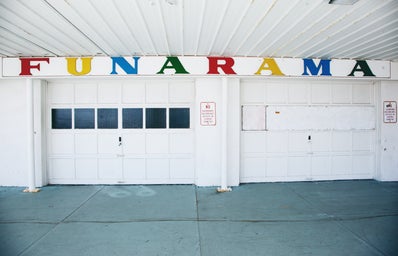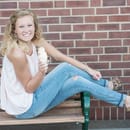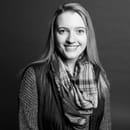From February 15-17, Winona State University’s campus newspaper, The Winonan, attended the ACP: Best of the Midwest College Journalism Convention. Multiple schools throughout the midwest and all over the country went, sitting in on sessions and listening to keynote speakers from 9 a.m. to 3 p.m. about different parts of journalism. Students spoke about using helpful tips from sessions not just for their on-campus newspapers, but also magazines. Class topics ranged from design principles to how to become creative within news reporting. Three of Winona State’s Her Campus members went to the convention, and they each learned special tips they could apply to their careers and within the Her Campus community.
KELLEN
I attended the conference for the first time this year and loved it! As an English teaching major, going to a journalism conference was pretty new to me. A lot of the people attending were journalism majors and hoping to go into the journalism field, so being an aspiring English Teacher made me feel a little on the outside. Aside from that, though, I did love the conference and learned a lot to take back with me and apply to my journalism writing at The Winonan. Even though I attended many different classes while at the conference, I will talk about my three favorites.
1. Keynote: Breaking the Norms – Jana Shortal
Shortal works at Kare 11 as a news broadcaster and has been bullied for her looks over the Internet countless times. She was invited to the conference by the ACP staff to talk about the adversities in the journalism field. Shortal explained the importance of staying true to you, whoever you are, and making sure to stay true to your gender, look, style, etc. because it is such an important part of who you are. Just because you’re on the news for the entire country to see, doesn’t mean you should change who you are. Shortal said, “Becoming who you are is a process. The development of a journalistic style is the same way.” She touched on emotions and being a person, as well. Shortal talked about how important it is to remind yourself you’re a human and you’re allowed to have emotions on the job. When you work in journalism, you have to discuss hard situations and be prepared to allow your emotions to flow if you need them to. Another difficulty in journalism is telling controversial stories. Shortal said, “We have to deal with the realities of the effects of journalism. When you’re doing it right, you’re going to make people mad.” It is okay to tell stories that not everyone will love, and that is something our own newspaper is trying to work on. Getting the word out to our campus on topics that might make people mad is hard, but it is worth it making sure our campus is aware of what is happening. Shortal said that admitting you’re tired is natural and okay: tired of the job, tired of the stories, tired of not being able to get the stories out that you want… there are a lot of things you can be tired about. However, you need to fight past that and tell the story. If a story needs to be told, tell it. Shortal shared her personal experiences with diversity in the field and the diversity all journalists face in the field. I loved this keynote speaker because Shortal was brutally honest about the world and everything that happens in the field of journalism and in life in general. She helped me understand that journalists work hard jobs and face a lot of adversity in their field. Keeping true to yourself is so important, and never losing your identity to please others is key to keeping yourself you on the job.
2. Projects Reporting – Ben Garvin and Lindsey Seavert
Ben Garvin and Lindsey Seavert are from Kare 11, as well. They worked as reporters, and when they came across a school in Minneapolis, Lucy Laney Elementary school, they found a story and knew they needed to report on it. After bringing the idea back to their boss, they were approved and went on their way to recording, interviewing, and collecting the story on a full year in the school. Garvin and Seavert ran into a lot of problems trying to record on an underrepresented elementary school, but they overcame their barriers and made a documentary about the elementary school and the principal. The documentary is titled “Love Them First: Lessons from Lucy Laney Elementary,” and it covered a year in the life of the school. Garvin and Seavert had to do a lot of convincing to be able to get their boss and the school to agree to continue the project. Garvin and Seavert talked about their struggles as producers, as well. One big problem they faced was dealing with their own personal emotions and watching the students struggle in the school. Seaverts advice was to “wear your person hat before your journalism hat,” meaning that you’re allowed to have emotions and feelings while you’re on the job. Seavert reminded us that we will encounter hard topics as journalists and that making sure to understand others’ pain is a key part. They also reminded us that being authentic builds trust from your sources. The Lucy Laney story was a big project compared to what they were used to reporting on, so their advice was, “With something big, take it bite by bite. Each week, take on something new. Fill in the gaps as you go.” The Lucy Laney project was important because it dealt with such personal issues and real life people. Garvin and Seavert reminded us to keep our character and to find compelling people to move the story in the right direction. Even if people are against your idea and don’t think you can do it, if you personally know it’s a story, then commit to it. Garvin and Seavert gave a great presentation and showed such a touching documentary; I was sobbing by the end and we only watched 20 minutes of it. It is amazing how powerful and moving journalism can be when it is used well.
3. Uncovering and Reporting on Hidden Campus Communities – Gayle Golden
I really liked this presentation because it sparked so many new ideas in my mind. As a features reporter for a campus newspaper, the possibilities are literally limitless. While the session was full of great ideas and inspiration for future articles, it was also powerful in a way that made me think about how I could give voice to the voiceless on my university campus. Golden talked a lot about how campus newspapers are powerful because they go out to such a specific audience. The population at the university at hand are usually the only people that end up reading the campus newspaper. This gives power to the writers and allows them to represent those people on campus who usually get forgotten about. Most universities are allowed to write about gender, identity, mental health, religion, etc. so it allows the writers to open up new ideas and discussions about these controversial topics. Golden mentioned the importance of “community journalism” and how it “can create change on a small level, rather quickly.” We also learned about helping to ensure students of all abilities are able to have access to the campus newspaper by putting audio recordings on the website so those who cannot read the paper have access to listen to its stories. Golden’s presentation was extremely eye-opening, and it helped me to see that we are ignoring a lot of students on our campus by not making the paper accessible to them or by not including them as sources or article topics in our newspaper. So many groups on campus are underrepresented and having the university newspaper write about them opens up a whole new conversation on campus.
Attending the ACP Best of the Midwest College Journalism Convention as a first time attendee was a really amazing experience to help boost my writing abilities and my views of my campus, myself, and all the students with whom I am a part of a community. It was more than just a journalism conference that taught us how to be better writers; it was a conference that taught us how to be better thinkers and activists on our campus. I will absolutely be returning next year and am so appreciative of everything I learned this year.
NATALIE
It’s my second year being a part of Winona State University’s newspaper, The Winonan, which has given me the ability to understand and learn more about photojournalism and its ethics compared to lifestyle photography. Last year, I couldn’t go to the ACP Conference when it was offered because of my involvement in an on-campus theatre and dance production. As a writer for Her Campus now, I find myself excited to write stories that are not exactly considered hard news, but more so entertaining to a reader’s eye. Writing in Her Campus has been eye-opening to how I write and also what I’m not used to.
I remember hearing how amazing ACP was last year, and when it was offered again this year, I signed up immediately. I wrote down so many notes from the sessions, and I walked away being filled with creativity from the weekend. I have lots of ideas after participating in ACP, and after the entire thing, I think I’m interested in design! I am excited to see where my inspiration will lead me.
The students going left first thing Friday morning. It was about a two-and-a-half-hour car ride, and being hyped-up with caffeine, you can imagine how excited I was.
One of my favorite sessions was from the first day. It was called “Covering Music, Movies, & Arts,” by Jon Bream, a writer from The Star Tribune. I loved this presentation for multiple reasons. First off, the speaker was fantastic! He was truly passionate about his job and what he wrote about in old articles. He asked multiple questions throughout his session, one being directed towards me. He asked everyone in the room if they liked Taylor Swift (some people raised their hands, and I was one of them). I was intimidated when he pointed at me and asked me “Why?” I told Mr. Bream she wasn’t afraid of backlash, and she writes and produces her own music. Mr. Bream said to everyone that in an article, when you write your opinion, you must state “why” after everything, including a “why” after the last “why.” This method not only supports your argument, but also it sells readers on a critical credential they believe you have. Even though I’m not sure if I can apply his session to my life because I haven’t made any report on a celebrity or star, I took all the advice he gave in his session to heart:
1. Access a star by communicating with their publicist, or even reach out in the simplest ways, like Twitter (because they do answer sometimes).
2. Prepare your interview.
3. Review your audience.
4. Support and justify all your opinions.
That first night after the sessions, the group had a little bit of downtime to eat food and hang out in the city. As tired as everyone was, we had enough energy to get onto a bus and go to the Minneapolis Institute of Art before it closed.
Another one of my favorite sessions was a longer one on Saturday. It’s not memorable because it lasted three hours, however. The session of “Creativity,” by Tom Keekly was one of my favorites because of the activity all students were forced to do: sit at a table with strangers from other colleges and come up with 100 ways to use a newspaper within a set time. Some of my groups included creating a handmade wallet, making another newspaper through the old newspaper, and folding newspaper to make the shape into a sailboat. I loved that the activity forced us to come up with the most random ways to use a newspaper. Some of the ideas were obvious, while others you had to truly think outside of the box for.
Finally, my last favorite session was on Sunday before the group headed back. The session was called “‘Wow’ Factor,” by Ron Johnson. This session was amazing, in my opinion, because Johnson showed pictures from both good and bad designs, as well as advertisements. The showing factor in this session inspired me because it made me realize how much I loved to look at the lines on a design, or the features on someone’s face and actions. I think it’s also beneficial that I am taking a print and web course right now, a class that teaches design principles. I understood everything they discussed from blank space to typography, along with how it can benefit or ruin a design.
I would love to go to ACP again; however, I may not be able to attend it until my senior year if I choose to study abroad for spring semester in 2020. There is another ACP conference, however, in the summer that I have a great interest in going to. Overall, I had a great experience that I will not forget!
LAUREN
This was my first time ever attending the ACP conference. I can honestly say that although not every class I went to was interesting, there were many helpful tips that I learned throughout the weekend. There were many speakers from bigger publications that had great insight into the industry and how it all works. It was helpful for me to learn more about the journalism world and get a lot of tips and tricks on improving my writing. I would definitely recommend getting involved in clubs to have the opportunity to go to conventions like these, and to be able to meet new people and learn things you wouldn’t learn in a traditional classroom setting. It’s fun to be able to attend a variety of classes and find new things that you are interested in.
I definitely loved some of the same sessions as Natalie and Kellen. The keynote speech by Jana Shortal was incredibly inspiring. She is an amazing person who is doing great things for journalism. I was also fascinated with the class on covering the arts. I am a pop culture fiend, so hearing about how to interview the stars was SO COOL. This guy was a successful writer for The Star Tribune, the fifth biggest newspaper in the country. He has interviewed everyone in popular music culture. Being able to hear his insight on a type of journalism we don’t always encounter as students was really helpful.
One of the most helpful sessions I went to on my first day was called “Better By Design,” by Linda Barrington. This was a crash course in everything related to design, which is something I have never worked with. I am interested in working in publishing in the future, which would involve book design, so it was cool to see all of the principles of design laid out for me.
The keynote speaker on the first day, Riham Feshir, was really interesting as well. She explained how she pioneered a different type of news coverage in journalism: podcasts. She explained the whole process of getting approval from her boss, the production of the podcast, and the impact it had. It was cool to hear about a new and innovative thing happening in the journalism world, and being able to hear clips of the podcast was also amazing. It was so well done and such a great way to bring in a larger audience to hear what is going on in the news in a way that would keep them interested.
Overall, I think this conference was a great way to branch out and learn new things. I am glad that I was able to attend before I graduate. It gave me a lot of insight into possible jobs after I graduate and that was extremely helpful. It also gave me some time to bond with the staff of the newspaper, which was really nice. (We don’t meet for a long time, so it can be hard to get to know the group members sometimes.) I would say it was an inspiring weekend and a really nice getaway from regular life!
(L-R) Natatlie Tyler, Kellen Brandt, Lauren Lott





